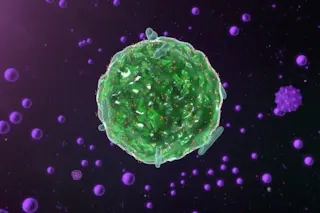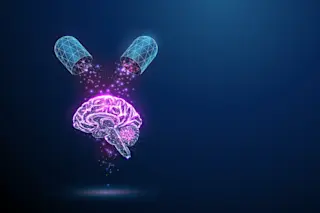Stopped at a red light on his drive home from work, Karl Deisseroth contemplates one of his patients, a woman with depression so entrenched that she had been unresponsive to drugs and electroshock therapy for years. The red turns to green and Deisseroth accelerates, navigating roads and intersections with one part of his mind while another part considers a very different set of pathways that also can be regulated by a system of lights. In his lab at Stanford University’s Clark Center, Deisseroth is developing a remarkable way to switch brain cells off and on by exposing them to targeted green, yellow, or blue flashes. With that ability, he is learning how to regulate the flow of information in the brain.
Using the new science of optogenetics, scientists can activate or shut down neural pathways, altering behavior and heralding a true cure for psychiatric disease.
Deisseroth’s technique, known broadly as ...













